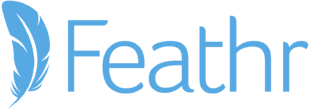[PODCAST] Creating a Planned Giving Plan
Are you ready to create a planned giving plan?
A planned giving plan is difficult because it’s hard to talk about the end, right? Not necessarily! In this episode of the Good to Growth Podcast, Lori Kranczer opens our minds to the possibilities of planned giving outside of estate gifts. While bequests are a form of legacy giving, they’re not the only form.
“Legacy giving is bigger than planned giving.”
Somehow, along the fundraising journey, the sector exclusively associated legacy giving with post-life giving. “Planned giving” commonly includes bequests, estate gifts, and post-mortem benevolence.
The truth is, a legacy gift is often the seed money for an endowment fund, support through a donor-advised fund (DAF), or even a non-cash gift. The distinguishing factor is that the mechanism is donor-centric. In addition, the process is tied to the individual or family’s legacy. When we take a broader and more creative approach to planned giving, it becomes easier—for us and our supporters!
“Everyone has the capacity to do some sort of legacy gift.”
I share a story in this episode about a transformational gift an organization I formerly led received through a bequest. The gift was completely unexpected. It came from an individual who would not show up on any wealth research engines or top donors list. He was a humble, dedicated volunteer who donated no more than $100 over the course of any one year. He passed unexpectedly, and the liquidation of some of his property funded a renovation of one of the organization’s oldest buildings.
My intent in sharing that story was to demonstrate that planned giving isn’t an activity reserved for top donors. Lori confirms this belief and states it far more elegantly: “Everyone has the capacity to make some sort of legacy gift.”
When and How to Get Started with Planned Giving
Planned giving gets so much buzz these days. We’re in the midst of the largest wealth transfer in history as baby boomers age and want to be part of the action. Even newer nonprofits feel pressure to take on planned giving as a fund development initiative. But Lori recommends waiting until year ten. More importantly, only after annual fundraising is in good shape. For mature organizations with annual funding in a healthy place, the time to start is now!
Lori reminds us that while planned giving is often a one-on-one conversation, there’s more to it. It needs to be part of your organization’s marketing strategy and annual plan. She describes working with her clients to not only prioritize featuring planned giving but to work into gaps or complementary areas of their marketing and communications.
Acronyms and Terms Mentioned
DAF | Donor-Advised Fund: A donor gifts funds to a public charity (often a Community Foundation) and thereby receives an immediate tax deduction. Over time, the donor can recommend the funds be granted out per their desires.
QCD | Qualified Charitable Distribution: This giving vehicle provides a way for donors who are 70.5 or older to donate up to $100,000 total to one or more charities directly from a taxable IRA instead of taking their required minimum distributions.
Bequest: A gift of assets that occurs after death, typically through a will.
Endowment (fund): A gift to an organization that is held in a fund that receives and disperses income to the nonprofit on an annual basis.
The post [PODCAST] Creating a Planned Giving Plan appeared first on Nonprofit Hub.










Leave a Reply